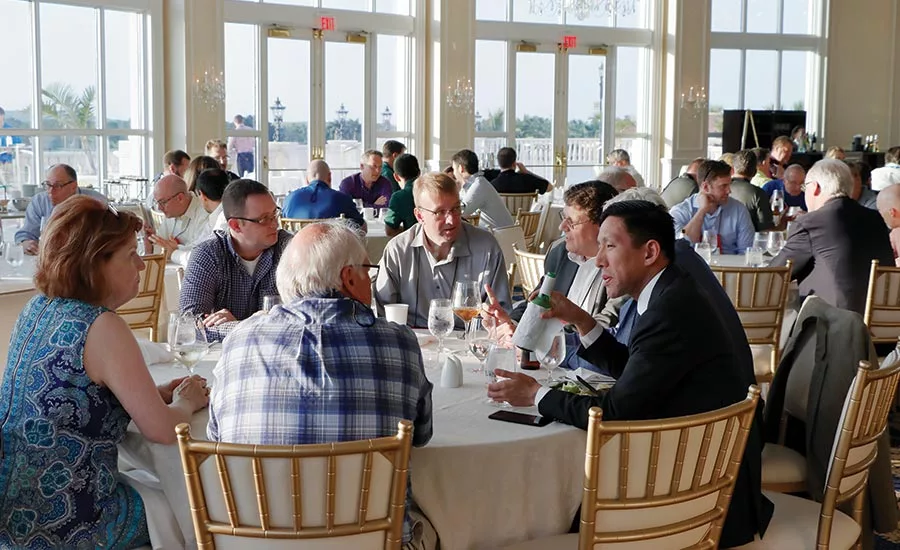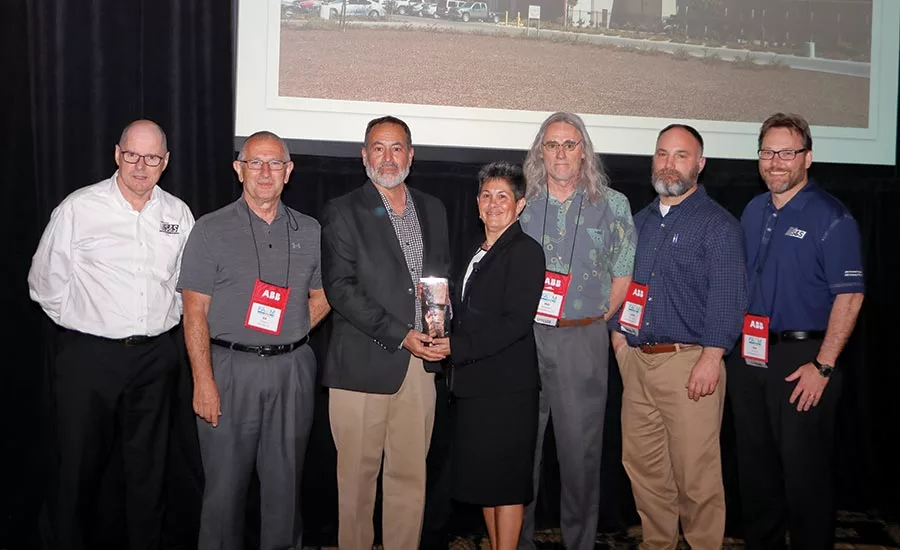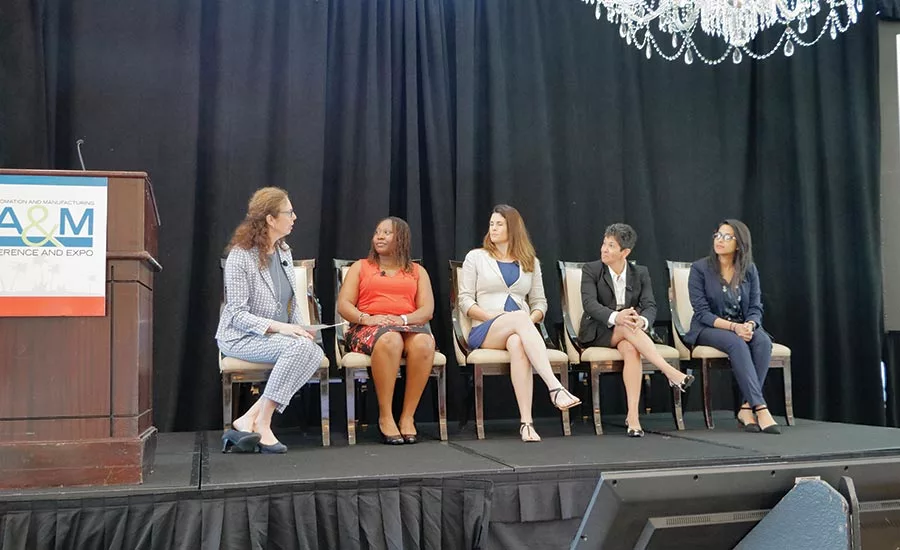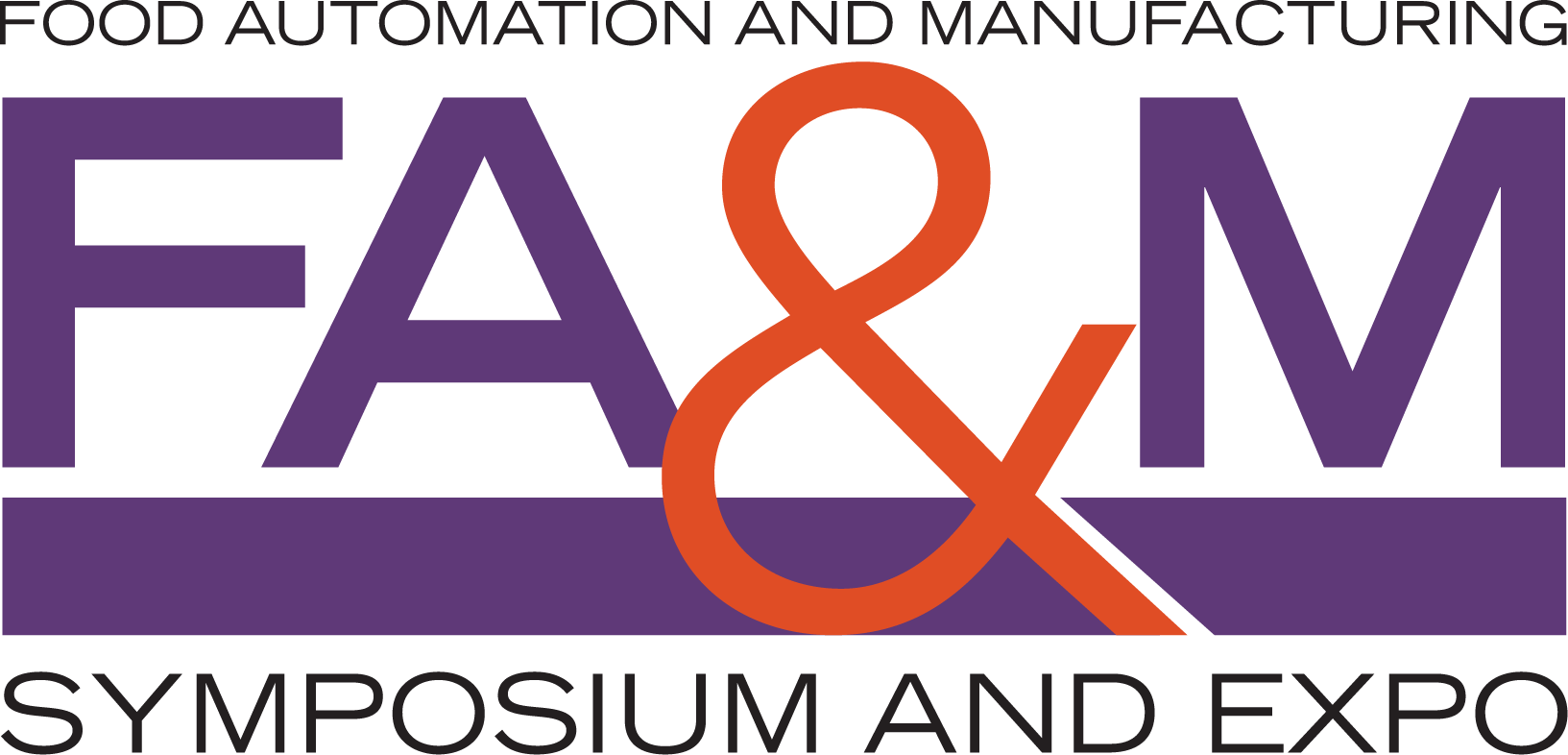FA&M Recap
FA&M gathers food processors and suppliers together for education and exhibits

In the Miami sunshine, processors and suppliers take advantage of abundant time for casual conversations at FA&M.

Valley Milk CEO Patti Smith, Valley Milk employees and representatives from Shambaugh & Son accepted the 2019 Food Engineering Plant of the Year award.

A panel discussion of women in food manufacturing focused on the challenges women face and how the industry can get more girls and young women interested in technical and engineering careers.
Jump To:
The Cannabis Edibles and Beverages Boom
Cannabis has been the talk of the food industry over the last couple years, and that chatter is only increasing as more states legalize recreational marijuana. The 2018 farm bill also legalized the production of hemp, which, like marijuana, contains CBD, but contains less THC.
While some food and beverage producers are making products that contain THC, most of the interest in cannabis products comes from CBD, which is not psychoactive. Treehouse Biotech CEO Ryan Beigie discussed the current and future trends that he expects to define the cannabis market.
The three biggest challenges facing the market are:
The regulatory environment: “It’s extremely unclear right now,” says Beigie, citing the differences between industrial hemp and marijuana, as well as the patchwork of state laws regulating the cannabis industry.
Product sourcing/ingredients: “This is where we’re hopeful that the FDA will come up with some standards,” says Beigie. Without industry standards for the specifics of what ingredients contain, processors run the risk of ending up with ingredients that aren’t what they are expecting. Industrial hemp cannot have a TCH level of more than 0.3%; anything above that is regulated the same way as marijuana.
That means that processors that want to make a CBD product that is not psychoactive must use an oil with less than 0.3%. Processors need a way to ensure that their ingredients meet that standard.
Working with suppliers within the industry: “Don’t take anything at face value,” says Beigie. As he points out, the patchwork regulatory system allows opportunities for people looking to make a quick buck without any regard for whether their products are in compliance.
To combat this, he suggests asking suppliers for documentation and licensing. Growers should be licensed by their state department of agriculture. Ingredient suppliers should be able to document where everything came from and the components.
Bonduelle Fresh Americas Receives 2019 Refrigerated Foods Processor of the Year Award
Marina Mayer, editor-in-chief of Refrigerated & Frozen Foods magazine, a sister publication to Food Engineering, presented Bonduelle Fresh Americas with the 2019 Refrigerated Foods Processor of the Year at this year’s FA&M show.
The Refrigerated Foods Processor of the Year award honors a company for its year-over-year growth and leadership in packaging, food safety, new product development, plant expansion and more.
Bonduelle Fresh Americas started out as Ready Pac Foods in 1969, producing customized fresh-cut salad orders. In 2017, Ready Pac was acquired by Bonduelle in France, and later changed its company name to Bonduelle Fresh Americas.
Today, it produces fresh-cut, ready-to-eat salads and vegetables out of four manufacturing plants, including its headquarters in Irwindale, Calif.
One of the reasons Bonduelle Fresh Americas received this industry award is that the plant-based, fresh food processor is considered a pioneer of fresh packaging. Its goal is to preserve the planet and enhance sustainability practices. It’s all about creating a better future through plant-based foods.
Go to www.refrigeratedfrozenfood.com/nominationsforRFFawards to learn more about these and other award nomination opportunities.
Women in Manufacturing Keynote
True leadership: Forging your own path
As president of global manufacturing for Dawn Foods, Gabrielle Kalkwijk ensures that Dawn’s manufacturing plants are operating effectively and efficiently.
Over the course of her more than 25-year career, Kalkwijk has held a number of different roles for different companies. She joined Dawn in 2012 as vice president of operations in Europe and AMEAP (Africa, Middle East and Asian Pacific).
As she has advanced in the food industry, Kalkwijk has relied upon setting her own path and clearly defining goals for both the short- and long-term. She described how she set her goals for her career when she first started her career.
“When I’m 30, I want to become a plant manager; when I’m 40, I want to be an operations director; when I’m 50, I’d like to have a board position,” she says. “I highly encourage you to do the same. Set your own plan, write down your goals and bear in mind you may veer off your path.”
Kalkwijk did veer off of her own path in 2011, when she resigned from her job without a replacement lined up after more than 20 years with the same company.
“Either I stayed for the rest of my life or I leave,” she says. “I resigned without having a new job. That was very much out of my comfort zone.”
During that time, she says she learned many things about herself and explored different aspects of her personality, allowing her to get a better perspective before she joined Dawn.
“I realized during my sabbatical that I make my best decisions in my life when I follow my intuition,” she says.
Kalkwijk also discussed her vision of true leadership, which includes knowing your own strengths and weaknesses; understanding what motivates others and how to connect with them; and balancing results with a personal touch. While she has weekly meetings with her team to discuss KPIs, she asks questions based on people’s specific strengths to draw out their perspective and help them recognize and take advantage of their own strengths.
“When we better understand ourselves and each other, we can come to a better performance,” she says. “When we show who we truly are, people try for us and for the company.”
Women in Manufacturing Panel
For the second year, the Food Automation & Manufacturing Conference featured a Women in Manufacturing panel to discuss the challenges women faced in a field dominated by men.
Moderated by Gabrielle Kalkwijk, the panel included:
- Joyce Longfield, vice president of product innovation, Good Foods Group, and chairperson, Cold Pressure Council
- Samara Heaggans, owner, SH Reid Consulting Solutions, formerly with Campbell’s Fresh Division
- Roohi Thakur, process optimization manager, Land O’Frost
- Patti Smith, CEO, Valley Milk
Although the panelists have different backgrounds, roles and career experiences, one common theme they shared was that at some point or another, they have had difficulty being taken seriously by male colleagues. Heaggans shared that even though she has an engineering background and an impressive resume, male colleagues have often failed to take her seriously because she is short and has a high-pitched voice. The other panelists also shared similar experiences, where their technical skills and educational background weren’t enough for colleagues to view them the same way that they would a man with a similar CV.
The panelists also focused on what could be done to fix that challenge, including sharing leadership lessons they have learned along the way. The importance of promoting your own skills and expertise was mentioned repeatedly because, as panelists mentioned, nobody bats an eye when a man in a meeting proclaims himself to be an expert in a particular area.
While all of the panelists agreed that things have improved for women in the industry, they also acknowledged that women are still a minority in the industry, and the only way that is going to change is to get more girls and young women interested in technical and engineering careers at a younger age. The panelists, all of whom have operational or engineering backgrounds, noted that there were often times in educational or professional settings where they were the only woman, and they stressed the need to encourage more women to explore engineering-oriented career options.
Hiring and Retention: Finding and Keeping Qualified Employees
The food industry is facing a staffing shortage, especially in the skilled labor and engineering areas. One company that has had success with finding and keeping qualified people is FONA, a suburban Chicago-based flavor provider.
Barb Pugesek, FONA’s director of customer and culture excellence, spoke about how the company focuses on its people to ensure that it can attract and retain good employees.
One of FONA’s key initiatives is to bring in recruiters, either in-house or outside the company, to understand the company’s culture and what it’s trying to achieve with employees. The focus is on the following points:
- Who you are
- What you do
- How you do it
- What you value most
- Your great people
“In the past five or six years, we’ve had some breakthrough results in how we do this,” says Pugesek. “We’ve dramatically shortened the time to fill positions. We’ve avoided a lot of the bad hire mistakes and the costs that go with them.
“Really, the secret is small, incremental changes. We’re seeing the retention to prove it and the performance to prove it as well.”
One big area that FONA has focused on is its relationship with recruiters. Pugesek says that when you have a transactional relationship with a recruiter, then you get a transactional result. Recruiters provide a person to fill a position, but they don’t have an incentive to focus on getting the right person for that position. But when you build a relationship with recruiters, not only are they more motivated to help you find the exact person you’re looking for, but they also have a better understanding of the skills and experience that you need in a position.
When it comes to existing employees, FONA focuses on forming relationships between employees and leadership so that information sharing is a two-way street and good ideas don’t fall by the wayside. When employees feel like their ideas are being heard and implemented by leadership, then they are more inclined to share those ideas and feel like they are valued. While compensation, benefits and other quantifiable aspects of employment matter, those things often rank lower on the list of why people leave compared to feeling unappreciated or feeling that their input isn’t considered valuable.
Clean label: What does it mean?
Clean label has no accepted legal or industry definition. But food manufacturers could shape the meaning by helping people understand that hard-to-pronounce or synthetic ingredients aren’t enemies, a food scientist who challenges nutrition myths says.
Manufacturers should embrace their responsibility to teach the public about the ingredients’ benefits, says Kantha Shelke, founder of Corvus Blue, a food science development firm.
“If you educate consumers, they will select synthetics on purpose as a way to avoid the untenable environmental footprint of the natural alternative,” she told the audience.
As an example, she asks which option is more sustainable:
- Using acres of land, water and energy to grow plants that produce minuscule amounts of natural flavors, sweeteners and phytonutrients?
- Or using fermentation with bioengineered yeast that’s been altered to produce those things 1,000 times more efficiently?
Ethical concerns, rather than individual worries, will increasingly influence what clean label is all about, says Shelke, who writes about food safety and teaches food law and technology through Johns Hopkins University. More importantly, FSMA will pressure companies to reformulate and complete honest cleanups of labels.
Consumers need to understand that the problem isn’t that ingredients have a lot of syllables or can be harmful in large quantities. More important considerations are: how the ingredients are used, that safe amounts are included, and how you eat them “in the grand context of everything else that you do,” she says.
“Every single thing that we consume contains something that is not good for us,” Shelke notes. Even salt or water can kill you if you consume too much, and you’ll have problems if you avoid them.
She challenges manufacturers—“if anyone has the guts”—to say to consumers: “Here’s why I’m using this ingredient, and here’s what science has done, and here’s how it’s going to affect it (the product). And by the way, if you eat eight buckets of it, you are going to be injured, but otherwise, it’s perfectly OK.”
She predicts that kind message will resonate with most people. The public typically doesn’t understand the details about how food is made and doesn’t trust the food industry at the moment, she says, but people really want to know this kind of information.
Looking for a reprint of this article?
From high-res PDFs to custom plaques, order your copy today!






